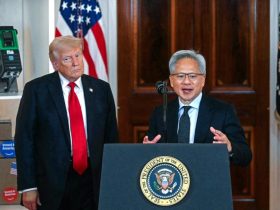New legislation working its way through Congress could improve retirement security for U.S. workers. The plan is part of a government spending bill, and it includes a provision that would automatically enroll eligible employees into their company’s retirement plan.
The hallmark of the legislation, called the Secure Act 2.0, would see companies enrolling workers in a 401(k) retirement plan, deducting at least 3% — but no more than 10% — of an employee’s pretax earnings, which would be deposited into the 401(k) account. Employees could always opt out of the program.
The legislation would also allow employers to factor in employees who make student loan payments when considering 401(k) contributions.
And it would provide tax incentives for small businesses — the vast majority of firms in the U.S. — to begin offering 401(k) plans by increasing the tax write-offs available to those businesses for offering access to a retirement plan.
‘It will deliver billions in additional retirement savings and help to ease the insecurity and anxiety that workers and retirees are feeling about having enough savings to provide them with the income they need to sustain them through retirement years,’ said Paul Richman, chief government and political affairs officer at the Insured Retirement Institute, a trade group.
While many companies currently offer 401(k) plans, enrollment is not typically automatic. Just 51% of businesses that responded to a 2020 Society for Human Resource Management survey said they automatically enrolled new or existing employees into a 401(k)-type plan.
Meanwhile, an AARP survey this year found that nearly half of all workers in the U.S. do not have access to a retirement plan at work in the first place. That equates to roughly 57 million private sector workers between ages 18 and 64.
The issue is especially acute for part-time workers. The Secure Act 2.0 would lower the service requirement for these workers from three consecutive years to two, meaning they’d be automatically enrolled in their employer’s 401(k) retirement program once they have surpassed 500 hours of total service.
Workers who’ve experienced unstable employment or switched jobs would also have access to a centralized database run by the Labor Department to learn whether their employer might have automatically enrolled them in a 401(k) plan during their employment.
The legislation would also improve the lot of the 84% of American adults who say student loan payments have limited their ability to save for retirement, according to a 2019 study by the Massachusetts Institute of Technology’s AgeLab and the financial services organization TIAA. Under the new legislation, employers could consider a worker’s student loan payment to be the equivalent of a 401(k) contribution and match it accordingly.
For older workers ages 60 to 64 who were unable to contribute to 401(k)s earlier in their careers, the so-called catch-up contribution they can make to their current 401(k) plan would increase to $10,000.
Finally, the legislation offers a 100% tax credit to businesses with 50 employees or fewer for the cost of maintaining a 401(k) plan.
‘It’s a bill that helps all income levels and all different types of workers and retirees,’ Richman, of the Insured Retirement Institute, said.








